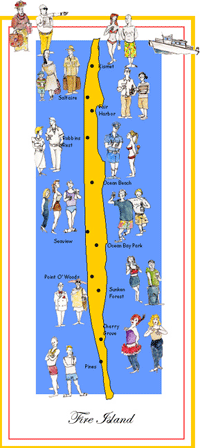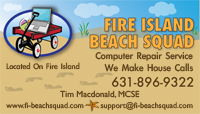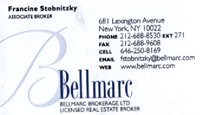
WEST NILE VIRUS
WITH ALL OF THE RECENT HEAVY RAINS, THE HEALTH DEPARTMENT HAS ISSUED A HEALTH ADVISORY PLAN esst
2007 MOSQUITO ACTION PLAN (MAP) Fire Island National Seashore
Reviewed By __/s/ Michael __S. Bilecki Date _07/16/07_____(Chief, Resources Management) Reviewed By _/s/ Sean McGuinness _ Date _07/16/07_____(Deputy Superintendent) Approved By __/s/ Michael T. Reynolds Date _07/18/07_____(Superintendent)
Introduction
Fire Island is a 32-mile long barrier beach approximately 1-5 miles south of Long Island..Fire Island National Seashore (FIIS) is located in eastern 26 miles of the island, along with a 613 acre estate on Long Island, NY, in the community of Mastic Beach. The park has concurrent jurisdiction with New York State that encompasses 1,000 feet into the Atlantic Ocean and 4,000 feet into the Great South Bay including the islands adjacent to the bay shoreline. There are 17 communities within the boundaries of the park, 13 of which are within the West District. There are approximately 4,100 homes on Fire Island all within the park's boundary, including two incorporated villages, which have their own governing bodies. Of the 4,100 homes, approximately 350-500 of the residences are year-round. Visitation on a peak season weekend day can be as high as 100,000 within the park areas and the communities combined.
Fire Island National Seashore has the responsibility to preserve the park natural resources. It is a responsibility of the park to monitor park mosquito populations, manage park natural processes, and assist in the protection of visitor and resident health. In 1985, based on research on mosquito dispersal, the park determined that the impact of mosquitoes in the federal wilderness area was minimal on nearby Long Island south shore communities.
In the late 1990's public concern relating to Eastern Equine Encephalitis and West NileVirus, both diseases related to mosquito populations, prompted the park to initiate mosquito monitoring and surveillance. To further limit the possibility of a major incident and to ensure a quick and rational response should a mosquito-borne disease be found in this area, the park has developed the following Mosquito Action Plan (MAP).
FIIS Mosquito Action Plan - 2007
FIRE ISLAND NATIONAL SEASHORE WEST NILE VIRUS ACTION PLAN
PRE-SEASON PREPARATIONS
During this stage the park receives low to moderate visitation and mosquito activity is dormant to low. The primary goal of this stage is to prepare for the season ahead.
1. All Stage Three Incident (see below) Caches should be checked to ensure that personal protective equipment (PPE) is maintained or replaced from the previous year. Those employees that are incidental responders in the field will have access to Tyvek tick suits, head nets, gloves and insect repellant at each ranger station in the park (William Floyd Estate, Wilderness VC, Watch Hill, Sailor's Haven, Lighthouse). These items are stored in locked, weather-resistant caches at each station. Caches will be checked and restocked as necessary. See Appendix D for equipment cache information.
2. All dead bird transport coolers (see below) should be checked to ensure that theequipment and protocols are maintained and current. Each ranger station in the park has a cooler with PPE and other items needed to collect and transport dead birds in accordance with state and federal guidelines.
3. Park employees should be informed of the preparations underway and educatedabout disease prevention including sanitation and personal protection. Theeducation program in the park should be started at the first staff meeting of the New Year (just to remind everyone of what is on the way). Employees should know how the disease is transmitted, how to prevent breeding areas from forming around the workplace or at home, and how to protect themselves. All employees should also be taught to recognize the signs and symptoms of West Nile Virus (see appendix A).
4. All park areas should be checked to identify any potential artificial freshwater mosquito breeding areas. Work orders should be generated to clean up these areas. This should include evaluating park vehicle access roads (Burma Road, road to facilities, etc.). Those areas that have significant rutting that retain standing water longer then 2-3 days may need to be graded or filled. Sanitation actions should continue until October, when mosquito breeding activity ceases (see Appendix E).
5. Park Management Protocols, educational/outreach documents (mosquito brochure, interpretive programs), and other brochures and handouts should be prepared and management plans finalized. Education should consist of brochures, interpretive programs, press releases or other means to inform the public.
6. Permit approvals for pesticide applications or other management interventions should be obtained and should include all possible regulated chemicals for mosquito management use. This is done in partnership with Suffolk County Vector Control. FIIS Mosquito Action Plan - 2007
Permit applications are made to the National Park Service Integrated Pest Management coordinator for FIIS.
7. The Mosquito Action Plan (MAP) should be prepared in accordance with the Mosquito Surveillance and Management Protocol. This plan should include a protocol for handling dead birds and should be reviewed and approved by the MAP committee. The 2007 MAP committee includes: Jim Dunphy - Facility Manager, Paula Valentine - Public Affairs Officer, Fernando Villalba - Park Biologist, Michael Bilecki - Chief, Natural Resources, and Jordan Raphael - Biological Technician
8. Adult mosquito trapping sites and larval sampling sites should be chosen in consultation with park experts and scientists at the United States Geological Survey - Biological Research Division.
9. Arrangements should be made with Suffolk County Vector Control and Suffolk County Department of Health Services or other agencies for transport and testing of mosquitoes, dead birds, etc. Shipment schedule for samples sent from Suffolk to State testing facility will dictate when specimens should be sent to the County by FIIS staff. This is important for working out the weekly trapping schedule in order to minimize the turnover period from collection to receiving test results.
10. All trapping equipment, parts and batteries should be checked for functionality to be repaired or purchased. All personal protective gear, sorting/identification materials and all other supplies need to be inventoried before the start of the season and restocked if necessary.
STAGE ONE - ACTIVE SURVEILLANCE AND EDUCATION
This stage begins in the summer when park visitation becomes moderate to high and mosquito activity is moderate to very high. The park will begin trapping mosquitoes and preparing pools of mosquitoes to be tested, in accordance with guidelines provided by the park's Mosquito Surveillance and Management Protocol. This will entail close work with Suffolk County Vector Control and Department of Health Services.
1. Education efforts by the park should be fully implemented. Interpretive programs, radio announcements and press releases should be used to educate staff and the general public. Park brochures, handouts, and other sources of information should be distributed to all the visitor centers and, where appropriate and workable, in Fire Island communities. Employees should be sufficiently knowledgeable to provide residents and visitors with accurate information (or know where they can get it). However, it is critical that all employees realize that the Superintendent or his/her designee is the only one speaking to the media to represent the park.
2. The protocol for handling dead birds should be distributed and promoted. Fire Island NS employees, residents and visitors should understand what to do if they find a dead bird.
3. Mosquitoes will be collected once a week from traps set out at the William Floyd Estate and from Smith Point to the Lighthouse. These mosquitoes will be kept chilled and transported back to PMF, where they will be sorted into the main vector species and stored on dry ice until delivered to Suffolk County Vector Control. The number of traps and exact placement will be determined after consulting with USGS biologists and SCVC. Deadlines for delivery of mosquitoes to SCVC will be coordinated with that agency.
4. Dead birds will be collected in accordance with the park's protocol (see Appendix B).
STAGE TWO - DETECTION AND PUBLIC NOTIFICATION
This stage occurs when routine mosquito monitoring indicates a potential emergence of adult mosquitoes, or West Nile Virus or Eastern Equine Encephalitis has been detected in or within 2 miles of the park. Visitation is probably high and mosquito activity high to very high. The park will notify Suffolk County of a potential emergence. If disease is detected in or near the park, visitors will be notified, informed of the (realistic) potential for contracting disease and advised to take proper precautions.
1. Field responders should be reminded of the resources available to them (equipment caches etc.)
2. In the event that disease is detected, education efforts by the park should be intensified. More frequent interpretive talks, community outreach and active distribution of brochures or handouts by rangers are a few ways to do this. Press releases should be generated (see Appendix C).
3. In the event that disease is detected, the park will consult with the Centers for Disease Control (CDC), Suffolk County Vector Control and Department of Health Services, New York State Health Department, New York State Department of Environmental Conservation and other authorities. Together with these agencies, the park will decide on the best course of action to minimize the risk to human health, and determine the possible environmental impact of any action taken.
4. In the event that disease is detected, arrangements for pesticide use should be finalized. The park should work closely with Suffolk County Vector Control and any other involved parties to assure that, should the need arise; application of pesticides is done within the guidelines approved by NPS, CDC, EPA and DEC.
STAGE THREE - MOSQUITO MANAGEMENT
This stage will be triggered by the detection of disease in more than one "pool" ofmosquitoes (a pool is defined as a sample of up to 50 mosquitoes, for one given trap) or by detection of disease in both mosquitoes and birds, or in increasing numbers of infected birds. Action at "Stage Three" could take several forms: application of adulticide to the identification site, application of larvicide to breeding areas, and/or closing areas of the park to the public. The current events and concerns of disease transmission shall be interpreted to the public and staff regardless of what management action is taken.
1. All of the actions listed above for Stage Two should be immediately implemented,
2. The park's response will conform to the Suffolk County Unified Command
(SCUC) structure and the NPS Incident Command System (ICS). Park headquarterswill be the Command Center, with supply, public relations and administration functions.
3. The Superintendent/Incident Commander will close areas of the park as needed
or appropriate. This may impact large areas of the park such as a marina or the William Floyd Estate, or just specific trails.
4. There should be a daily radio brief to the staff as part of the incident command
process. Public information efforts should be coordinated with the CDC and SCVC to prevent duplication of work and assure that information is consistent.
Debriefing Period:This period will conclude a Stage Three of the MAP, after the above actions (1-4 of Stage Two and 1-4 of Stage Three) have been taken. The purpose of this period is to evaluate the effectiveness and efficiency of the overall response to the incident.
1. If Stage Three was reached, each response team leader, district ranger or other supervisor should hold discussions with his/her staff and be prepared to make a presentation to the Incident Commander and overhead team no later than one pay period after the incident. The Incident Commander and overhead team should be prepared to hold a supervisor's critique based on the above time line.
2. The superintendent will schedule a meeting with the MAP committee no later thanone pay period after the Incident Commander concludes his/her critique.
3. The park management team should quickly evaluate current conditions and a return to the appropriate stage should begin immediately.
4. If needed, the appropriate changes or additions should be made to the actions taken in Stage Three in order to mitigate any unnecessary future challenges experienced during the incident response.
POST- SEASON WRAP-UP At this point visitation is low and mosquito activity is low to dormant. The main purpose of this stage is to evaluate the past season, report results and clean and store all equipment.
1. A final report will be written, detailing the results of the season's mosquito surveillance and management activities, along with any recommendations for next year.
2. All monitoring equipment will be cleaned and put into safe storage, ready for next years use.
APPENDIX A
QUESTIONS AND ANSWERS ON WEST NILE IRUS/ENCEPHALITIS
FOR MPLOYEES AND VISITORS OF FIRE ISLAND NATIONAL EASHORE
What is West Nile Encephalitis?"Encephalitis" means an inflammation of the brain and can be caused by bacteria and\ ruses, including viruses transmitted by mosquitoes. West Nile Encephalitis is an nfection of the brain caused by West Nile Virus (WNV), a virus native to Africa, West sia, and the Middle East. West Nile Virus is also less commonly found in southern urope. It was found in the Western Hemisphere for the first time in 1999. It is closely elated to St. Louis Encephalitis virus, also found in the United States.
How big a threat is West Nile Virus to the health and safety of NPS employees andvisitors? Since its introduction into the Western Hemisphere, West Nile Virus has proven to be ost serious in the elderly and people who are already weakened by other ailments. Since 999, when the virus first appeared in the Northeast, it has spread westward. The Centers or Disease Control reports that in 2005, WNV occurred in 42 states and the District of olumbia with 119 fatalities. There were 38 reported human cases and 4 deaths in New ork State. There were 9 reported human cases in Suffolk County, NY but with no fatalities. People most likely to develop serious symptoms are the elderly and those who have a compromised immune system, such as people diagnosed with AIDS. Using insecticide with 33% DEET is recommended. Follow the label directions carefully, especially when using DEET on children, for whom a lower % of DEET is recommended.
What is the basic transmission cycle for the West Nile virus? Mosquitoes become infected when they feed on birds infected with the virus. After an incubation period (roughly 10 days), infected mosquitoes can transmit West Nile virus to humans and/or other animals. Disease symptoms do not develop in everyone who is bitten by an infected mosquito. Elderly and other people who fighting and illness aremore likely to develop symptoms and possibly encephalitis.
How long has West Nile virus been in the United States? It is not known how long the virus has been in the U.S., but the Centers for Disease Control and Prevention (CDC) scientists first detected it in the eastern U.S. during the summer of 1999 in Queens, NY.
How do people get West Nile Virus? Transmission comes through the bite of a mosquito (primarily the Culex spp., or possibly Aedes sollicitans) that is infected with the West Nile Virus. The virus is located in the mosquito's salivary glands. It is not commonly transmitted by casual contact between people, but in a small number of cases it has been transmitted by blood transfusions, organ transplants, breastfeeding and even during pregnancy from mother to baby.
What are the symptoms of West Nile Virus? Most people who are infected with WNV have no symptoms. Some experience flu-like symptoms, including fever, headaches, and body aches, and skin rash and swollen lymph glands are also common symptoms. In fewer cases, the infection may be more severe and an infected person may also experience neck stiffness, stupor, disorientation, coma, tremors, convulsions, muscle weakness, and/or paralysis. Severe infection may lead to permanent neurological damage or death in the most extreme cases.
What is the treatment for West Nile Virus?There is no specific treatment for West Nile Virus. Mild cases usually clear up with no treatment. In more severe cases, intensive supportive therapy is indicated including hospitalization, IV fluids and nutrition, and good nursing care. If you develop symptoms of severe WNV illness, such as unusually severe headaches or confusion, seek medical attention immediately.
Is there a vaccine against West Nile Virus? Though there are vaccines for the West Nile Virus for horses and other pets, there is no vaccine for human use at this time.
Can a person get West Nile Encephalitis directly from birds that might have the virus? There is evidence that a person with a cut can get West Nile Encephalitis from handling live or dead birds that test positive for the virus. To be safe, always use gloves or double plastic bags to handle or remove dead birds.
Is a woman's pregnancy at risk if she gets West Nile encephalitis? There is evidence that an infection caused by the West Nile virus can be transmitted to the non-born child of a pregnant woman. The Centers for Disease Control recommends that pregnant women avoid being bitten (stay away from mosquitoes and ask your doctor about the use of repellent).
Why doesn't Fire Island National Seashore spray for mosquitoes? Fire Island National Seashore is by law required to protect the native wildlife, plants and other natural resources within its boundaries from environmental contamination. Modern insecticides, while safer for humans than their older counterparts, are often very toxic to fish and other forms of marine life. Since 1999, Fire Island National Seashore, in cooperation with Suffolk County, and in consultation with New York State and the Centers for Disease Control, has conducted a mosquito surveillance program each summer to monitor mosquitoes on park lands for the presence of diseases that present a threat to humans, such as Eastern Equine Encephalitis and West Nile Virus. The program was designed by a leading entomologist from the University of Rhode Island. Each week, mosquitoes are sent to Albany to be tested for disease. If mosquito-borne disease is found in the park, or within a few miles of park boundaries, the National Park Service will consult with the County, the CDC, New York State and with academic experts to decide whether or not to spray park lands to reduce the number of adult mosquitoes. Other control methods such as larviciding may also be implemented.
What role does the Centers for Disease Control and Prevention play in NPS mosquito management efforts? The Centers for Disease Control and Prevention and other federal, state and local agencies will assist the National Park Service to determine the severity of the public health threat from mosquito-borne disease in Fire Island National Seashore, and to choose the appropriate course of action to protect the health of staff, residents and visitors.
What can park visitors or park employees do to prevent becoming infected with the West Nile virus? No control method will eliminate all mosquitoes. For the individual, the very best formof protection is personal protection. Avoid areas with mosquitoes, but if you must be outside, wear protective clothing and use repellent.
. Long-sleeved shirts, long pants, a hat, and gloves can provide increased protectionfrom mosquitoes. For extra protection, clothing can also be treated with an insecticide such as permethrin.
. The use of an insect repellent on exposed skin will reduce your chances of beingbitten by mosquitoes. A repellent with 20% to 30% DEET (N,N-diethyl-metatoluamide) as the active ingredient works the best.
. The combination of permethrin-treated clothing and a DEET-based repellent on exposed skin will provide for maximum personal protection.
. The use of a head net and mesh jacket can also provide added protection and needed ventilation on warm days.
Where can I get more information on West Nile Virus and other mosquito borne diseases?Check on the web at HYPERLINK http://www.cdc.gov/ncidod/dvbid/westnile/index.htm or call your local public health office.
2007 PROTOCOL FOR COLLECTING DEAD BIRDS ON FIRE ISLAND NATIONAL
The National Park Service, Fire Island National Seashore (NPS-FIIS) will work with the New York State Department of Environmental Conservation (DEC), Suffolk County Health Department and Suffolk County Vector Control (SCVC) to collect and transport bird carcasses. For viral testing, the DEC definition of an acceptable bird carcass for collection and transportation is:
. The bird is a crow, a raven, a blue jay or a raptor (osprey, eagle, hawk, vulture, or falcon).
. The collector believes it died within the past 18-24 hours (the carcass is fresh, not bloated, infested or decayed).
. The collector believes it did not die of routine natural causes or due to an accident.
EVERY EFFORT SHOULD BE MADE TO COLLECT AND TRANSPORTCARCASSES TO THE PATCHOGUE MAINTENANCE FACILITY WITHIN A FEW HOURS SO THAT THE 24-HOUR PERIOD IS NOT PASSED.
List of dead-bird drop off locations on Fire Island National Seashore: Lighthouse Annex (checkpoint) Talisman Sailors Haven Watch Hill Wilderness Visitor Center (Smith Point)
Rules for reporting, handling and transporting dead birds:
. Safety first and foremost - DO NOT TOUCH THE CARCASS WITH YOURBARE HANDS!
. THE PERSON WHO FOUND THE BIRD (STAFF, RESIDENTS OR VISITORS) SHOULD CALL THE SUFFOLK COUNTY DEAD BIRD HOTLINE IMMEDIATELY TO REPORT IT: (631) 853-8405, 9:00 AM to 4:30P
REDUCTION OF ARTIFICIAL FRESHWATER MOSQUITO BREEDING HABITAT ON PARK LANDS As stated in the Mosquito Surveillance and Management Protocol, Fire Island National Seashore will conduct a sanitation program to remove or reduce artificial larval habitat for the West Nile Virus vector, Culex spp. Such habitat is characterized by the presence of stagnant, dirty, fresh water. Fresh water that is present and undisturbed for 4 days or more and that contains a moderate to large quantity of organic matter (decaying vegetation; animal droppings; garbage of any kind; pollution or runoff from gardens, livestock holding pens, or other sources) is prime habitat for Culex. Following are suggestions from state and federal agencies in NY, NJ and elsewhere for where to look for Culex larval habitat and mechanical remedies to reduce the attractiveness of these areas to mosquitoes.
Underground Septic Tanks Mosquitoes can enter through covers that don't fit properly, through cracks in the ground, or through vent pipes, and produce offspring in large numbers. Covers should be altered so that they fit adequately, cracks should be filled, and all vents should be covered with screening, preferably aluminum, to prevent the entry of females ready to lay eggs.
Crawl Spaces under Buildings Garbage bags, tin cans or other open containers may collect water. Refuse may attract vermin whose droppings will make the area even more enticing to Culex. Trash or garbage of any kind should be removed .
Containment Areas for Livestock Pens should be examined for permanent or semi-permanent puddles, or low, outlying areas of standing water that receive runoff. Steps should be taken to reduce the amount of runoff and fill in the puddles. Disposal of animal wastes should be done in an area with drainage sufficient to prevent the accumulation of rainwater.
Garbage Dumps Areas should be examined for the presence of standing fresh water (in cans or can covers, trash bags, old buckets, under or beside storage sheds). Containers should be overturned or adequately
Gas Tanks Area should be examined for the presence of refuse, standing fresh water or containers able to collect standing water. Refuse should be removed, puddles filled, and containers covered or overturned.
Clogged Ditches or Drains Remove source of clog and check routinely.
Garbage Cans, Recycle Bins and Other Containers Holes should be punched in the bottoms (not the sides) of plastic garbage or recycling bins to prevent them from holding water. All areas with significant human impact should be examined for forgotten or discarded containers (flower pots, tin cans, buckets, etc.) that may fill with fresh water and provide breeding habitat. Containers should be discarded, covered or overturned.
Tire ruts on roads Tire ruts can prove to be significant breeding ground for freshwater mosquitoes. The ruts should be filled and the road graded to improve drainage. Note: If potential breeding sites are found that are not easy to remedy by the means outlined above, the location and a brief description of the area should be given to the park biologist in charge of mosquito management.
Also note that the Fire Island National Seashore action plan can be accessed at: http://www.nps.gov/fiis/parkmgmt/upload/20O7_MosquitoActionPlan.pdf











